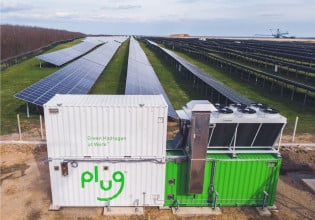Today, the Obama administration released the initial installment of the first-ever Quadrennial Energy Review (QER), a four-year cycle of moving-spotlight assessments that will provide a roadmap for U.S. energy policy going forward. The first installment of the QER focuses on needs and opportunities for modernizing the nation's energy transmission, storage, and distribution (TS&D) infrastructure — including the range of vulnerabilities and challenges to posed by climate change, the evolving energy mix, aging components and systems, workforce needs, and more. The report proposes specific recommendations and investments to replace, expand, and modernize infrastructure where needed, with the goal of ensuring continued economic competitiveness, energy security, and environmental responsibility. Recommendations include the following actions:
Supporting the updating and expansion of state energy assurance plans, and establishing a competitive grant program to promote innovative solutions to enhance energy infrastructure resilience, reliability, and security. DOE should undertake a multi-year program of support for state energy assurance plans, focusing on improving the capacity of states and localities to identify potential energy disruptions, quantify their impacts, share information, and develop and exercise comprehensive plans that respond to those disruptions and reduce the threat of future disruptions. The estimated cost for this program is $350 - $500 million over 10 years. DOE should also establish a program to provide competitively awarded grants to states to demonstrate innovative approaches to TS&D infrastructure hardening and enhancing resilience and reliability. A major focus of the program would be the demonstration of new approaches to enhance regional grid resilience, implemented through the states by public and publicly regulated entities on a cost-shared basis. The estimated cost for this program is $3 -$5 billion over 10 years.
Analyze the policies, technical specifications, and logistical and program structures needed to mitigate the risks associated with loss of transformers. As part of the Administration’s ongoing efforts to develop a formal national strategy for strengthening the security and resilience of the entire electric grid for threats and hazards (planned for release in 2015), DOE should coordinate with the Department of Homeland Security and other Federal agencies, states, and industry—an initiative to mitigate the risks associated with the loss of transformers. Approaches for mitigating this risk should include the development of one or more transformer reserves through a staged process.
Electricity is central to the well-being of the Nation. The United States has one of the world’s most reliable, affordable, and increasingly clean electric systems, but it is currently at a strategic inflection point—a time of significant change for a system that has had relatively stable rules of the road for nearly a century. To enhance the development of a modern electric grid, the QER recommends:
Providing state financial assistance to promote and integrate TS&D infrastructure investment plans for electricity reliability, affordability, efficiency, lower carbon generation, and environmental protection. In making awards under this program, DOE should require cooperation within the planning process of energy offices, public utility commissions, and environmental regulators within each state; with their counterparts in other states; and with infrastructure owners and operators and other entities responsible for maintaining the reliability of the bulk power system. The estimated cost for this program is $300 - $350 million over 5 years.
Promoting grid modernization. DOE has made a comprehensive grid modernization proposal in the President’s Fiscal Year (FY) 2016 Budget request. The crosscutting proposal supports strategic DOE investments in foundational technology development, enhanced security capabilities, and greater institutional support and stakeholder engagement, all of which are designed to provide the tools necessary for the evolution to the grid of the future. The estimated cost for this program is $3.5 billion over ten years.
Improving grid communication through standards and interoperability. In conjunction with the National Institute of Standards and Technology and other Federal agencies, DOE should work with industry, the Institute of Electrical and Electronics Engineers, state officials, and other interested parties to identify additional efforts the Federal Government can take to better promote open standards that enhance connectivity and interoperability on the electric grid.






